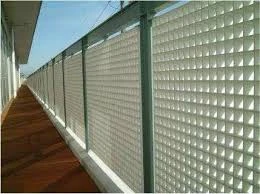
-
 Afrikaans
Afrikaans -
 Albanian
Albanian -
 Amharic
Amharic -
 Arabic
Arabic -
 Armenian
Armenian -
 Azerbaijani
Azerbaijani -
 Basque
Basque -
 Belarusian
Belarusian -
 Bengali
Bengali -
 Bosnian
Bosnian -
 Bulgarian
Bulgarian -
 Catalan
Catalan -
 Cebuano
Cebuano -
 China
China -
 China (Taiwan)
China (Taiwan) -
 Corsican
Corsican -
 Croatian
Croatian -
 Czech
Czech -
 Danish
Danish -
 Dutch
Dutch -
 English
English -
 Esperanto
Esperanto -
 Estonian
Estonian -
 Finnish
Finnish -
 French
French -
 Frisian
Frisian -
 Galician
Galician -
 Georgian
Georgian -
 German
German -
 Greek
Greek -
 Gujarati
Gujarati -
 Haitian Creole
Haitian Creole -
 hausa
hausa -
 hawaiian
hawaiian -
 Hebrew
Hebrew -
 Hindi
Hindi -
 Miao
Miao -
 Hungarian
Hungarian -
 Icelandic
Icelandic -
 igbo
igbo -
 Indonesian
Indonesian -
 irish
irish -
 Italian
Italian -
 Japanese
Japanese -
 Javanese
Javanese -
 Kannada
Kannada -
 kazakh
kazakh -
 Khmer
Khmer -
 Rwandese
Rwandese -
 Korean
Korean -
 Kurdish
Kurdish -
 Kyrgyz
Kyrgyz -
 Lao
Lao -
 Latin
Latin -
 Latvian
Latvian -
 Lithuanian
Lithuanian -
 Luxembourgish
Luxembourgish -
 Macedonian
Macedonian -
 Malgashi
Malgashi -
 Malay
Malay -
 Malayalam
Malayalam -
 Maltese
Maltese -
 Maori
Maori -
 Marathi
Marathi -
 Mongolian
Mongolian -
 Myanmar
Myanmar -
 Nepali
Nepali -
 Norwegian
Norwegian -
 Norwegian
Norwegian -
 Occitan
Occitan -
 Pashto
Pashto -
 Persian
Persian -
 Polish
Polish -
 Portuguese
Portuguese -
 Punjabi
Punjabi -
 Romanian
Romanian -
 Russian
Russian -
 Samoan
Samoan -
 Scottish Gaelic
Scottish Gaelic -
 Serbian
Serbian -
 Sesotho
Sesotho -
 Shona
Shona -
 Sindhi
Sindhi -
 Sinhala
Sinhala -
 Slovak
Slovak -
 Slovenian
Slovenian -
 Somali
Somali -
 Spanish
Spanish -
 Sundanese
Sundanese -
 Swahili
Swahili -
 Swedish
Swedish -
 Tagalog
Tagalog -
 Tajik
Tajik -
 Tamil
Tamil -
 Tatar
Tatar -
 Telugu
Telugu -
 Thai
Thai -
 Turkish
Turkish -
 Turkmen
Turkmen -
 Ukrainian
Ukrainian -
 Urdu
Urdu -
 Uighur
Uighur -
 Uzbek
Uzbek -
 Vietnamese
Vietnamese -
 Welsh
Welsh -
 Bantu
Bantu -
 Yiddish
Yiddish -
 Yoruba
Yoruba -
 Zulu
Zulu
fiberglass pipe flanges
Understanding Fiberglass Pipe Flanges Features and Applications
Fiberglass pipe flanges are essential components in various industrial applications, offering a unique combination of durability, corrosion resistance, and lightweight properties. Made from a composite material that combines glass fibers with a resin matrix, these flanges are increasingly being used in piping systems, particularly in industries where chemical resistance is paramount.
One of the primary advantages of fiberglass pipe flanges is their remarkable resistance to corrosion. Traditional metal flanges can suffer from rust and degradation when exposed to harsh environments, including chemical exposure or extreme weather conditions. In contrast, fiberglass flanges do not corrode, making them ideal for applications in chemical processing, wastewater treatment, and marine environments. Their longevity can lead to significant cost savings over time, as they require less maintenance and replacement.
Another critical feature of fiberglass flanges is their lightweight nature. Weighing significantly less than their metal counterparts, fiberglass flanges simplify installation and handling. This lightweight characteristic reduces labor costs and the overall weight of the piping system, which can be particularly beneficial in applications where weight restrictions are crucial, such as in aerospace or offshore installations.
Fiberglass pipe flanges can also be manufactured to various specifications, allowing for customization to meet specific project requirements. They can be produced in a range of sizes and configurations, including standard and custom shapes, to fit different piping systems. This versatility makes them suitable for various applications, from municipal water supply systems to industrial chemical transport.
fiberglass pipe flanges

Furthermore, fiberglass flanges demonstrate excellent thermal insulation properties. This is particularly advantageous in systems where temperature variations can affect performance. By providing a barrier against heat loss or gain, fiberglass flanges contribute to energy efficiency and help maintain optimal operating temperatures within the piping systems.
In terms of installation, fiberglass flanges can typically be fitted using standard gasket and bolt methods. However, it is essential to ensure compatibility with the materials used for the pipes to avoid any issues. Proper installation techniques must be followed to maintain the integrity of the flange and the overall system.
The applications of fiberglass pipe flanges are extensive, spanning industries such as oil and gas, water treatment, agriculture, and food processing. Their ability to withstand corrosive substances, combined with their lightweight and thermal properties, makes them an attractive option for engineers and project managers seeking reliable solutions.
In conclusion, fiberglass pipe flanges represent a robust and efficient alternative to traditional flange materials. Their corrosion resistance, lightweight design, thermal insulation capabilities, and adaptability to various applications make them an invaluable asset in the realm of industrial piping systems. As industries continue to look for sustainable and cost-effective solutions, the popularity of fiberglass components is likely to rise, further solidifying their role in modern engineering practices.
Latest news
-
Exploring the Benefits of Top Hammer Drifter Rods for Enhanced Drilling PerformanceNewsJun.10,2025
-
High-Precision Fiberglass Winding Machine for GRP/FRP Pipe Production – Reliable & Efficient SolutionsNewsJun.10,2025
-
FRP Pipes & Fittings for Shipbuilding - Corrosion-Resistant & LightweightNewsJun.09,2025
-
Premium FRP Flooring Solutions Durable & Slip-ResistantNewsJun.09,2025
-
Premium Fiberglass Rectangular Tanks Durable & Lightweight SolutionNewsJun.09,2025
-
Tapered Drill String Design Guide Durable Performance & UsesNewsJun.09,2025









